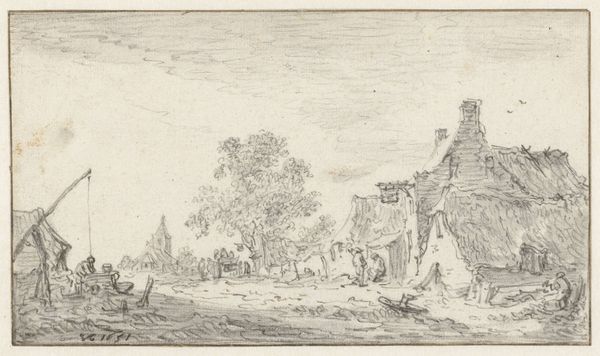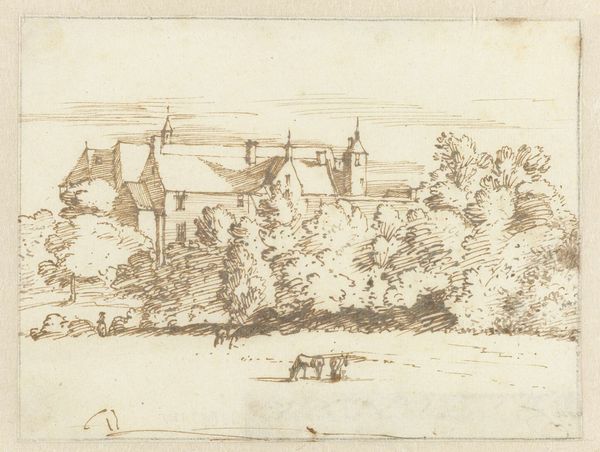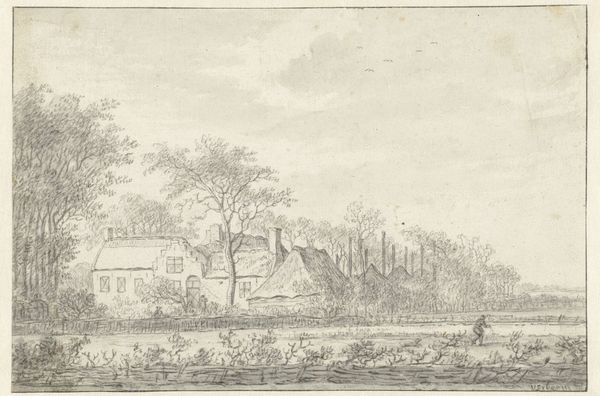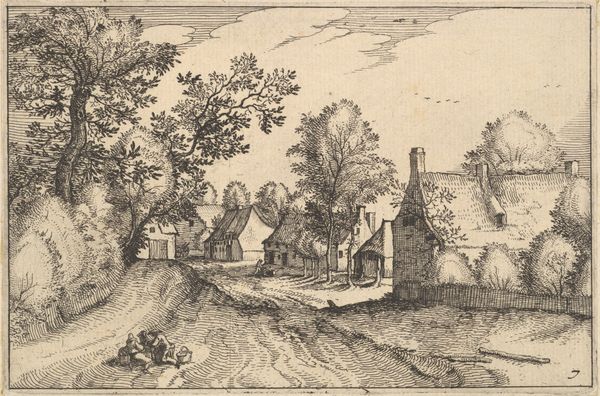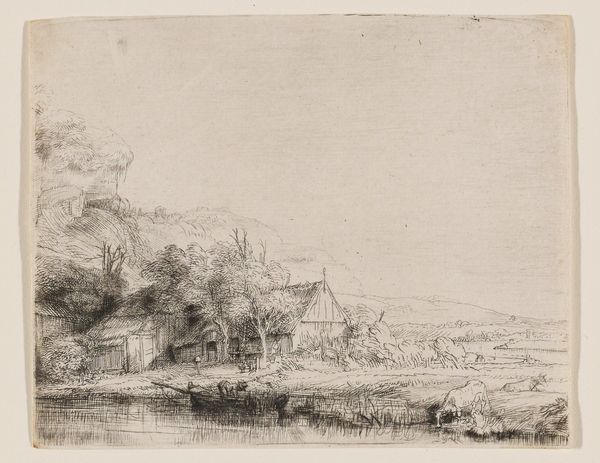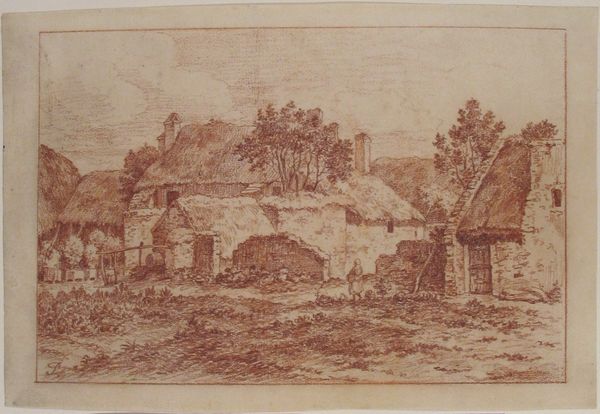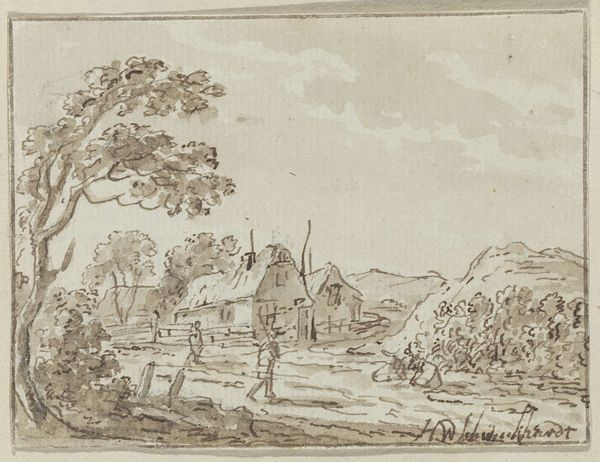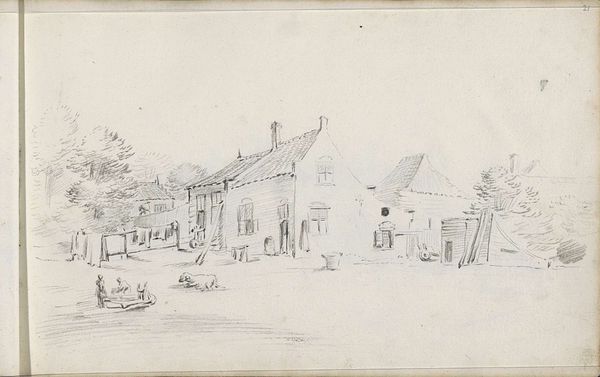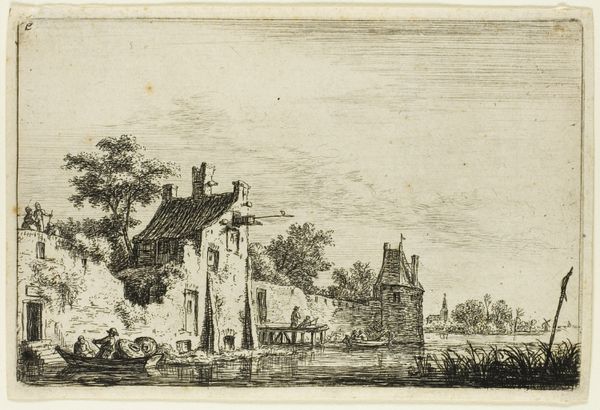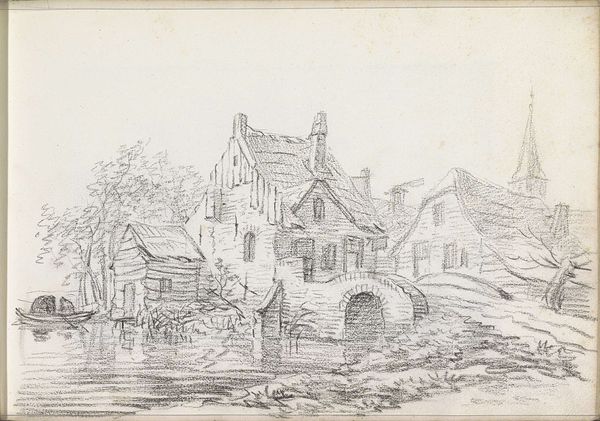
drawing, paper, ink
#
pen and ink
#
drawing
#
dutch-golden-age
#
landscape
#
etching
#
paper
#
ink
#
realism
Dimensions: height 79 mm, width 145 mm
Copyright: Rijks Museum: Open Domain
Editor: This is Jan van Goyen’s "Dorpsstraat," created sometime between 1606 and 1656. It’s a pen and ink drawing on paper. It has such a peaceful, unassuming quality. What strikes you about this piece? Curator: I see a meticulous focus on the materiality of everyday life in the Dutch Golden Age. Van Goyen uses readily available, humble materials – pen, ink, paper – to depict a common village street. Consider the accessibility of both the subject matter and the means of production. Editor: Accessible in what way? Curator: Van Goyen is essentially democratizing art. He isn't using expensive paints or portraying noble subjects. The labor involved is clear: the deliberate, repetitive strokes that build up the image. It's a focus on the "how" rather than just the "what." How was this artwork produced, by whom, and for whom? The physical making of the drawing connects us to the labor practices of the time, and how common these scenes would have been to people of the era. What do you think that suggests about the consumption of art? Editor: That's interesting. I guess I was thinking about it more traditionally, about the landscape, the realism... I hadn't considered it as democratizing art itself! Curator: Exactly! It challenges the idea of art as solely the realm of the wealthy elite. And, crucially, the act of observing and depicting everyday scenes is elevated. Editor: So, the real value is in appreciating the social and economic factors embedded in even a simple drawing like this. Curator: Precisely. We gain a deeper understanding of Dutch society, and Van Goyen’s contribution to shifting the landscape of artistic production and consumption.
Comments
No comments
Be the first to comment and join the conversation on the ultimate creative platform.
